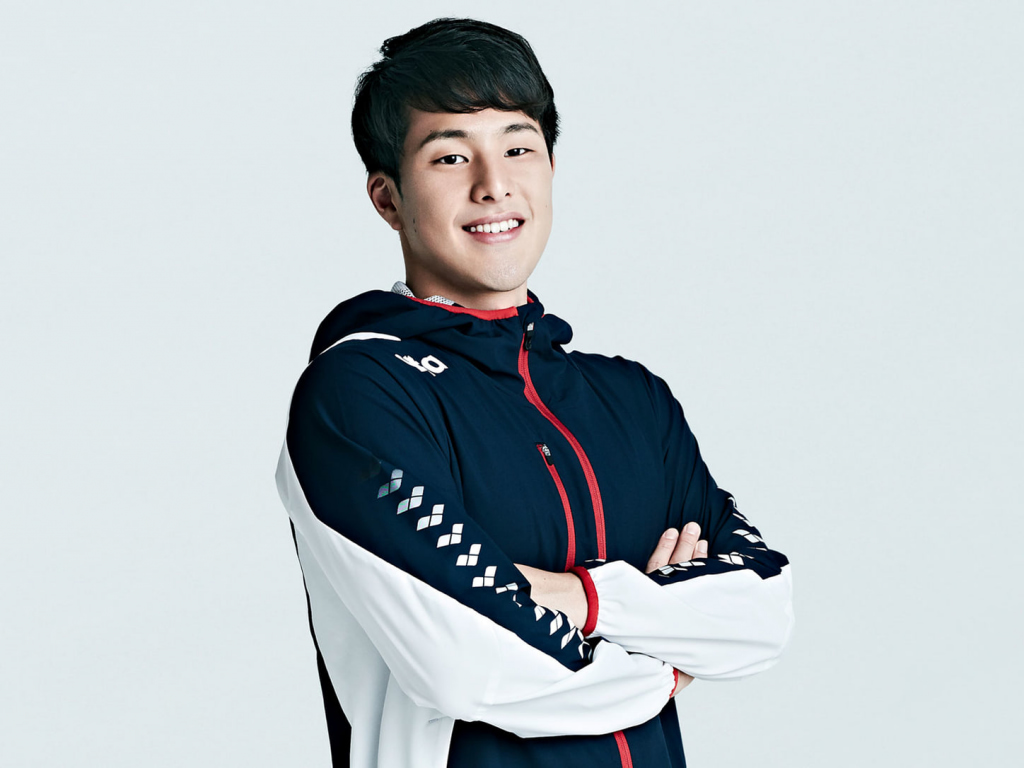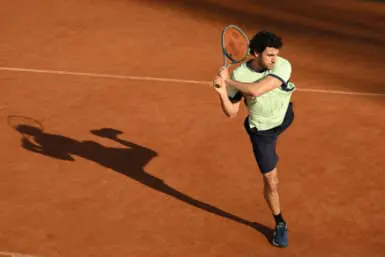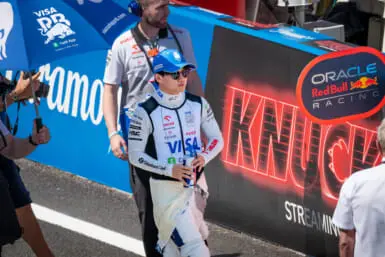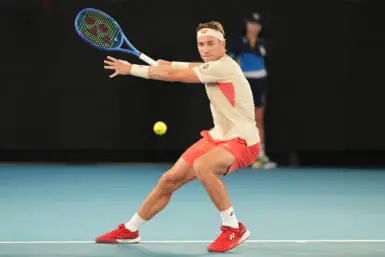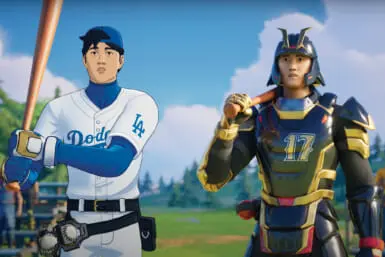Next up in our Meet the 2020 Athletes series is Daiya Seto, one of Japan’s biggest hopes to top the podium at the upcoming Olympics in Tokyo. A bronze medalist from Rio and multiple-time World Champion, he competes in the individual medley, butterfly, breaststroke and freestyle events.
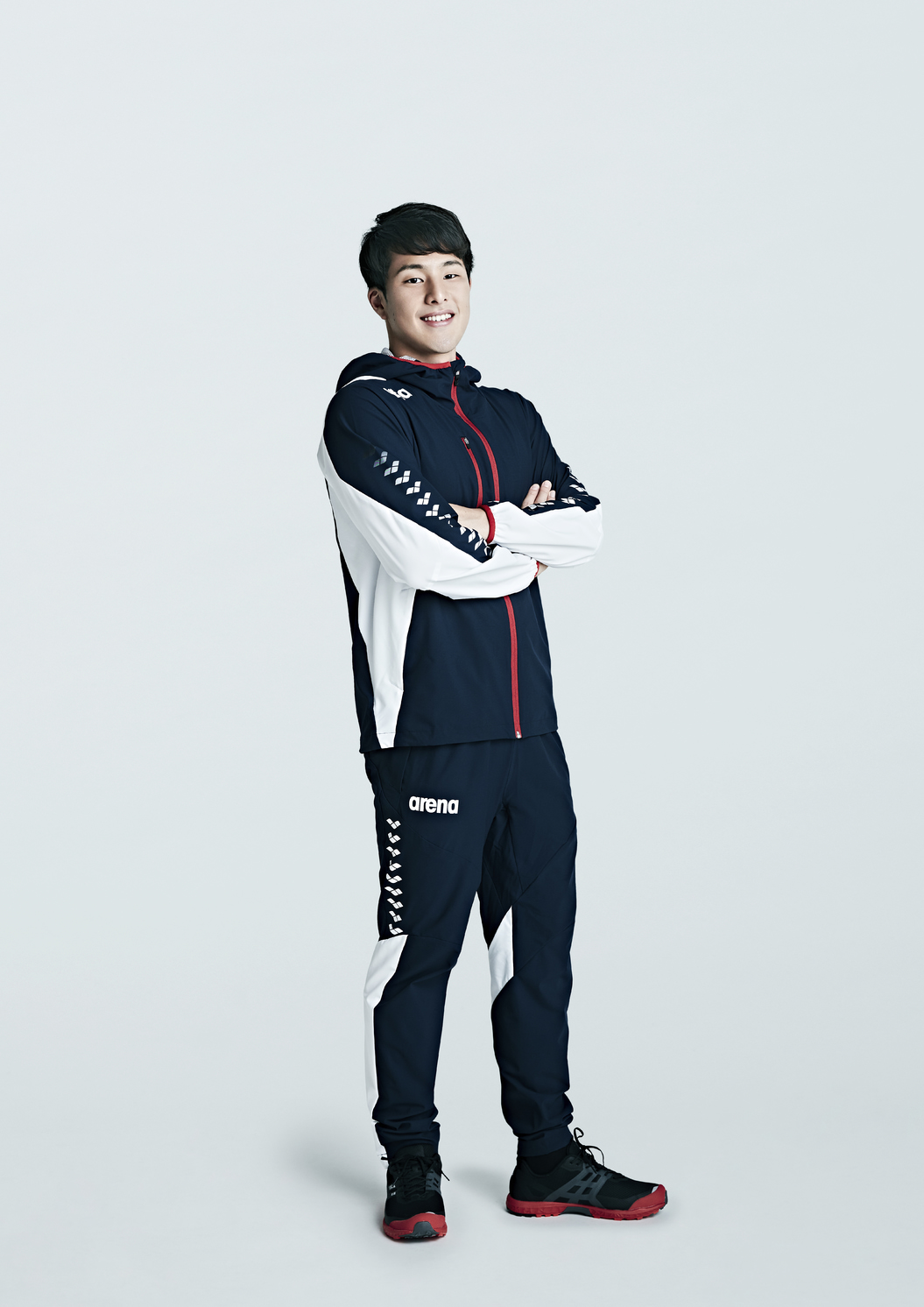
Twenty-five-year-old Daiya Seto is in the form of his life having recently become Japan’s first-ever 200m and 400m individual medley (IM) double gold medalist at this year’s World Aquatics Championships in Gwangju, South Korea. It’s a feat that was achieved by just three swimmers before him: Michael Phelps, Ryan Lochte and Chase Kalisz, all from America.
Seto, who also picked up a silver in the 200m butterfly, won his first 200m IM race at the Worlds in an impressive time of 1:56:14. He followed that up with the 400m IM title three days later, his fourth gold medal in total, putting him one ahead of legendary Japanese swimmer Kosuke Kitajima. The Waseda University graduate has also claimed five golds at the Short Course World Championships (where races take place in a 25-meter pool).
“Of course, I put a huge amount of effort into the World Championships and it’s a great competition to win, but honestly speaking I see it more as a stepping stone to something bigger,” Seto tells TW. “The ultimate goal is to get a gold medal at the Olympics. That’s something I’ve been dreaming about since I was a child.”
The Saitama native took up swimming at the age of 5. Though he tried other sports such as volleyball, skateboarding and snowboarding, it soon became clear that his real talent lay in the pool. Even as a youngster, he had a strong physique and would often power to victory at school meets.
In his second year at junior high school, Seto broke the national record for his age group before going on to win three inter-high school titles in the 400m IM. That was his strongest discipline, though he also liked to compete in various other events, much like a certain American swimmer who went on to become the most decorated Olympian of all time.
The ultimate goal is to get a gold medal at the Olympics. That’s something I’ve been dreaming about since I was a child
“Phelps was my hero growing up,” says Seto enthusiastically. “His concentration going into each race was on another level. You need that kind of focus to be able to compete in numerous events. Within each discipline, there are different points you must be wary of, which changes your mental preparation. It’s difficult. When I was younger it was just about swimming as fast as I could. I never saw myself as a great talent or anything. I just wanted to work hard so I could one day become an Olympic champion.”
At 17, Seto failed to make the Japan team for the 2012 Olympics after finishing third in both the 200m and 400m IM at the national championships. It was a huge setback for the ambitious swimmer, but he recovered and by the end of the year showed his potential by winning a gold and silver at the FINA World Swimming Championships Short Course in Istanbul. He reaffirmed that promise seven months later with a victory in the 400m IM at the World Aquatics Championships in Barcelona.
“Missing out on the London Games was the biggest disappointment of my career,” admits Seto. “I’d never felt as bad as that in my life before and still haven’t since. It took me a while to get over it, but it also made me more determined. I knew I had to improve. Winning a gold medal in Barcelona the following year eased some of my frustration.”
At the 2015 Worlds in Kazan, Seto defended his crown in the 400m IM. It was then time to try and prove himself on the biggest stage: The Olympics in Rio. In the final of his favorite event, he was out in front after 100m before compatriot Kosuke Hagino took over the lead on the backstroke stage. Kalisz pushed close at the end, but Hagino managed to hold out for the gold while his teammate had to settle for third. It was the first time that two Japanese swimmers shared the podium since the Melbourne Games in 1956.
“I wasn’t happy with my performance,” concedes Seto. “I believed if I could have maintained my form from the World Championships in Russia, I would have a good chance of winning gold. In the end, it wasn’t to be, but standing on that podium alongside Kosuke, I did feel blessed. He achieved something special thanks to years of assiduous practice. It was fully deserved.”
Strong rivals in the pool and close friends away from it, Hagino and Seto have been competing against each other since they were children. With three medals in Rio, the former seemed to be getting the upper hand, however, he’s suffered an alarming dip in form in recent years as injuries have taken their toll. Seto, meanwhile, has gone from strength to strength, particularly over 200 meters.
“I think my improvement in the 200m IM is down to the lactic acid resistance training I’m doing,” says Seto. “I’m happy with how things are going right now, but when it comes to a one-off competition, it’s all about how you feel on that day. I’m just focusing on my races, nothing else. My objective is to win gold in Tokyo to realize an ambition I’ve had since I was a kid.”
Japan’s Other Medal Contenders in the Pool
Kosuke Hagino
Since his heroics in Rio, Kosuke Hagino has struggled for form and fitness. Recent signs, however, suggest he may be rediscovering his mojo. A supremely talented swimmer, the 25-year-old is more than capable of adding to his four Olympic medals.
Masato Sakai
In Rio, Masato Sakai finished just four-hundredths of a second behind winner Michael Phelps in the final of the 200m butterfly. Last year he had surgery to address an ongoing ganglion cyst affecting his shoulder. Should be a contender in Tokyo if fully fit.
Katsuhiro Matsumoto
In July, Katsuhiro Matsumoto clinched a silver medal in the 200m freestyle at the World Championships, a race that was won by three-time Olympic gold medalist Sun Yang who could face a lengthy ban if he’s found guilty of doping rule violations.
Ippei Watanabe
The first swimmer to go under 2.07 in the 200m breaststroke, Ippei Watanabe has won consecutive bronze medals at the World Championships. In this year’s final, his world record (shared with Australia’s Matthew Wilson) was broken by Russian star Anton Chupkov.
Yui Ohashi
The first Japanese woman to dip below the 2.08-barrier in the 200m IM, Yui Ohashi finished second at the 2017 World Championships behind Hungary’s Katinka Hosszú. It was the same top two this year until Ohashi was disqualified for two dolphin kicks during the breaststroke pull-out. She won a bronze in the 400m.
Other names to look out for in the pool include breaststroke specialists Yasuhiro Koseki and Reona Aoki, as well as three-time Olympic medalist Ryosuke Irie. Teenage star Rikako Ikee meanwhile, who was diagnosed with leukemia in February, hasn’t given up on her
Olympic dream.

